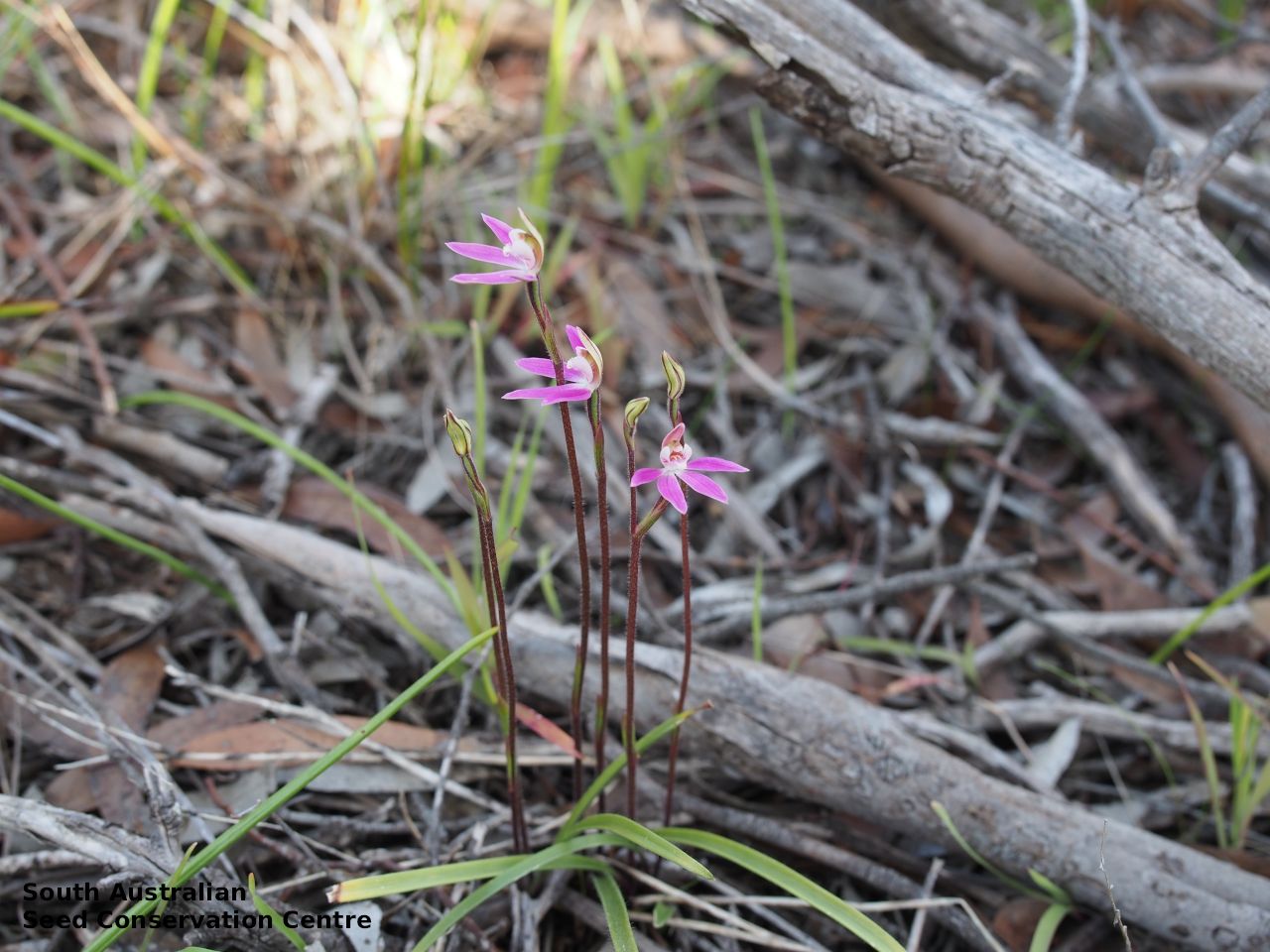
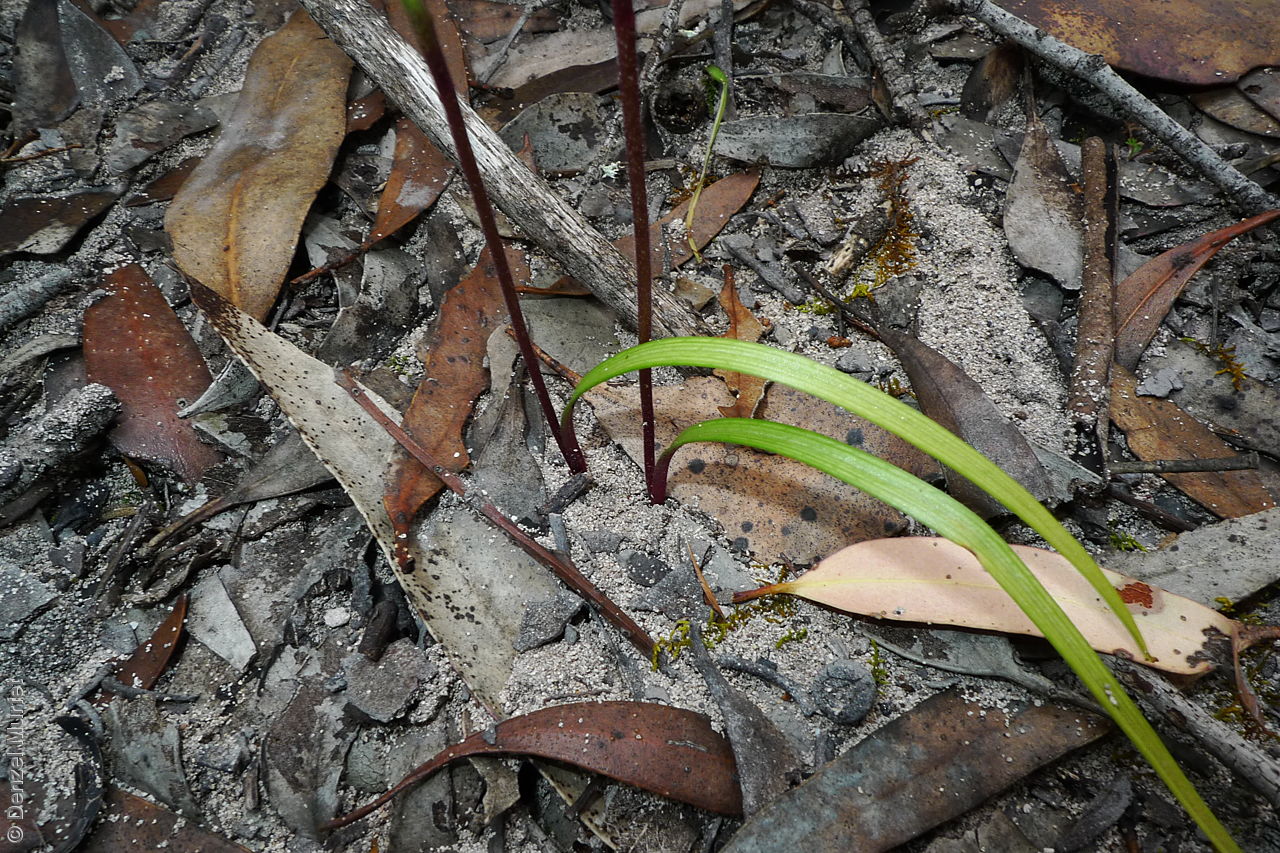
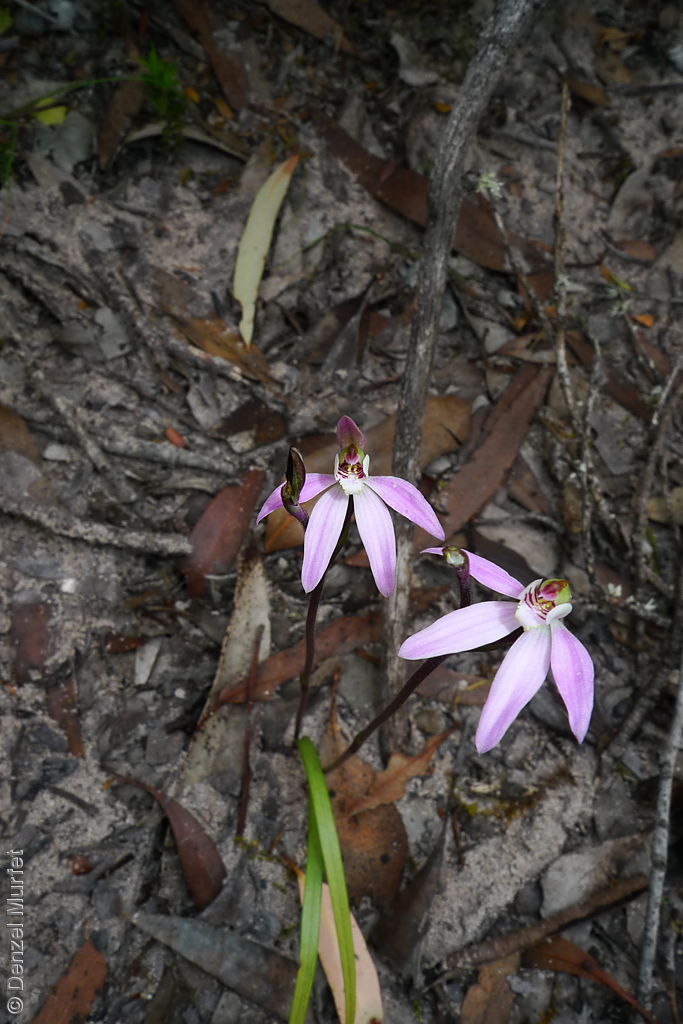
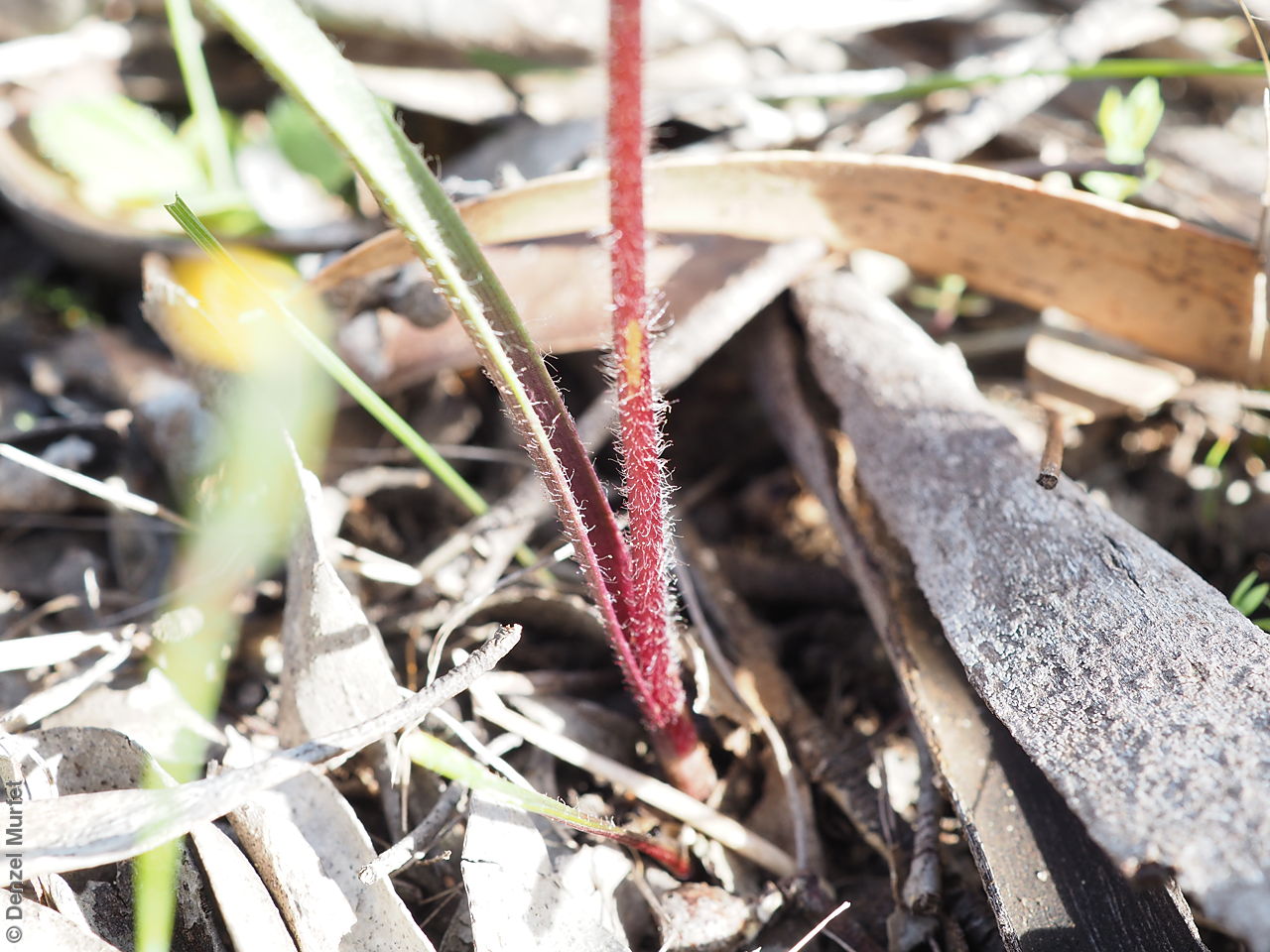
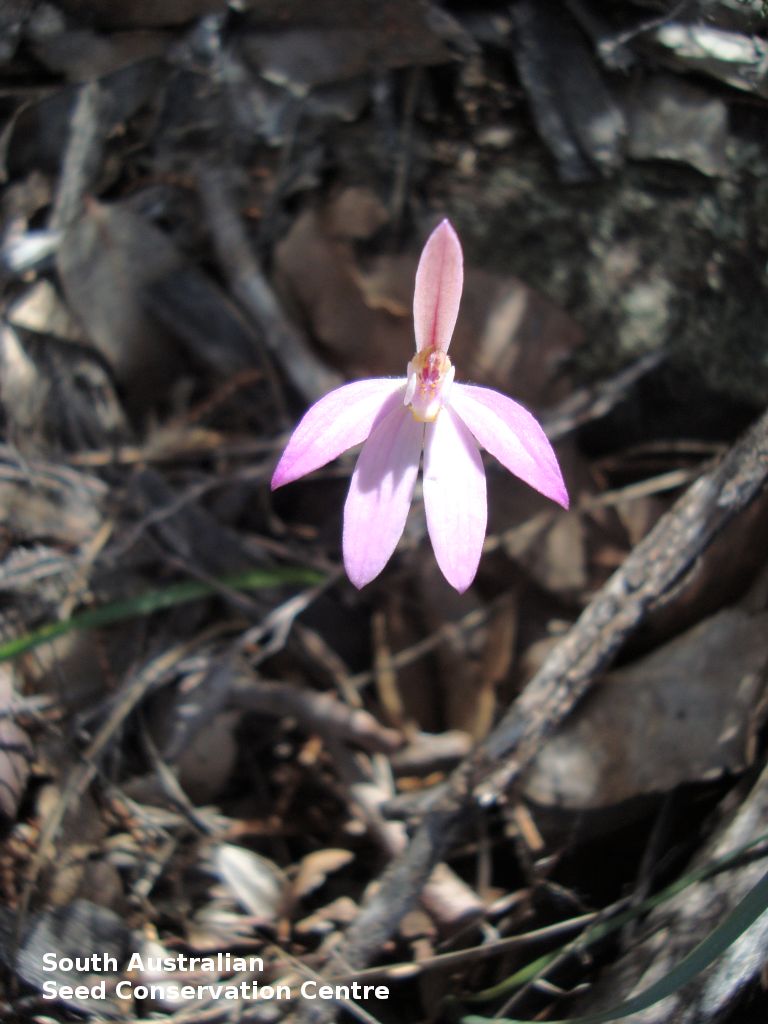
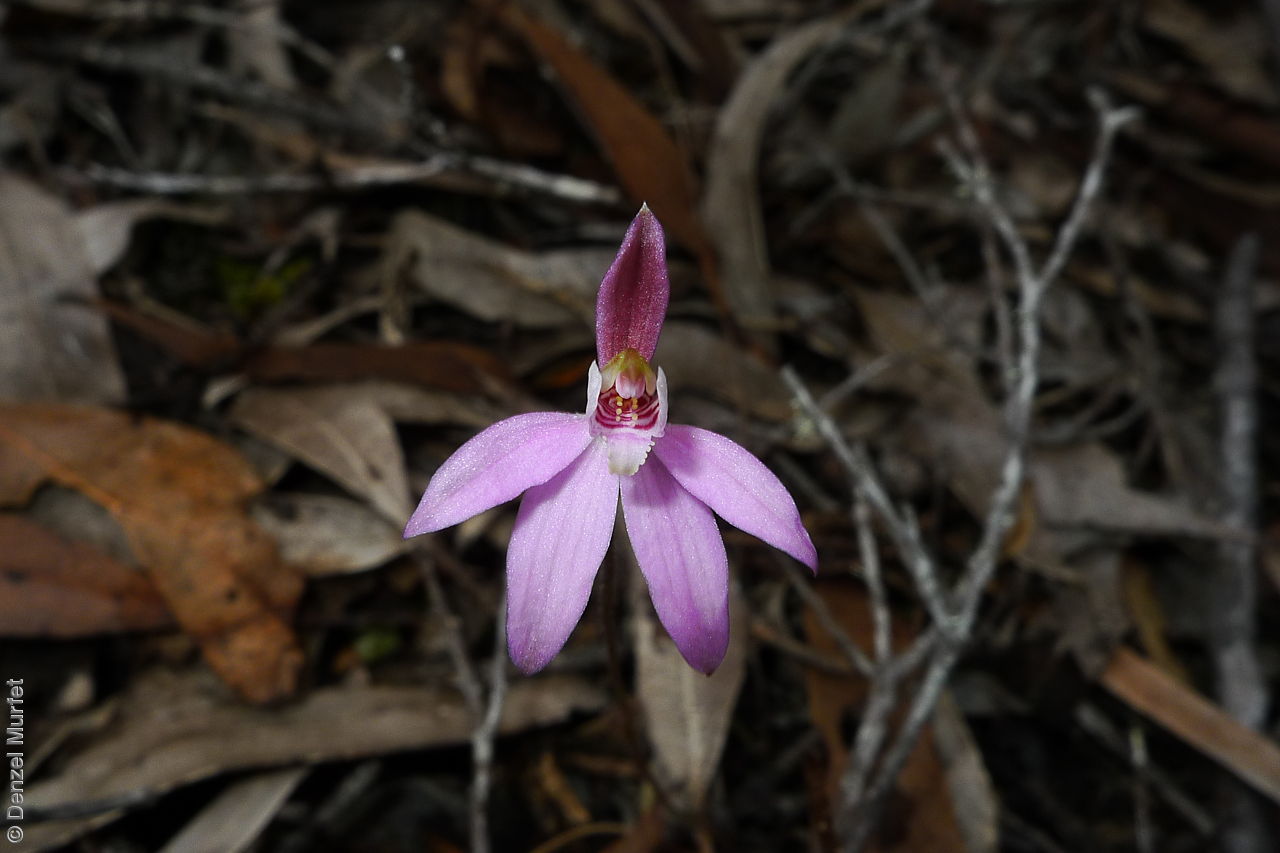
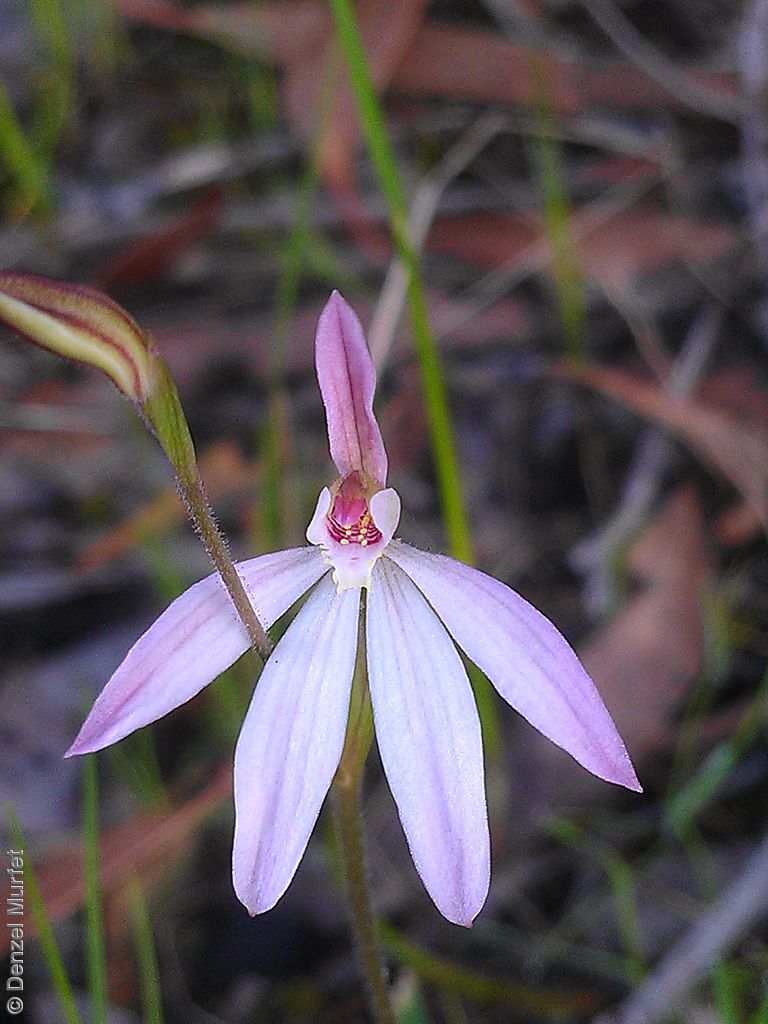
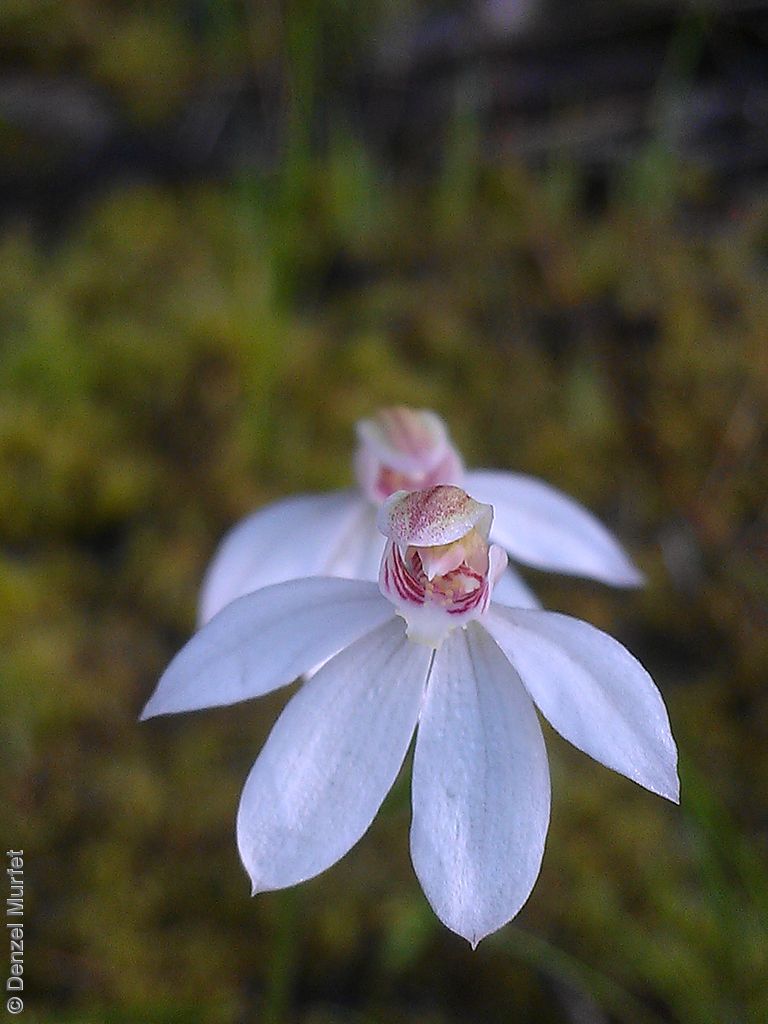
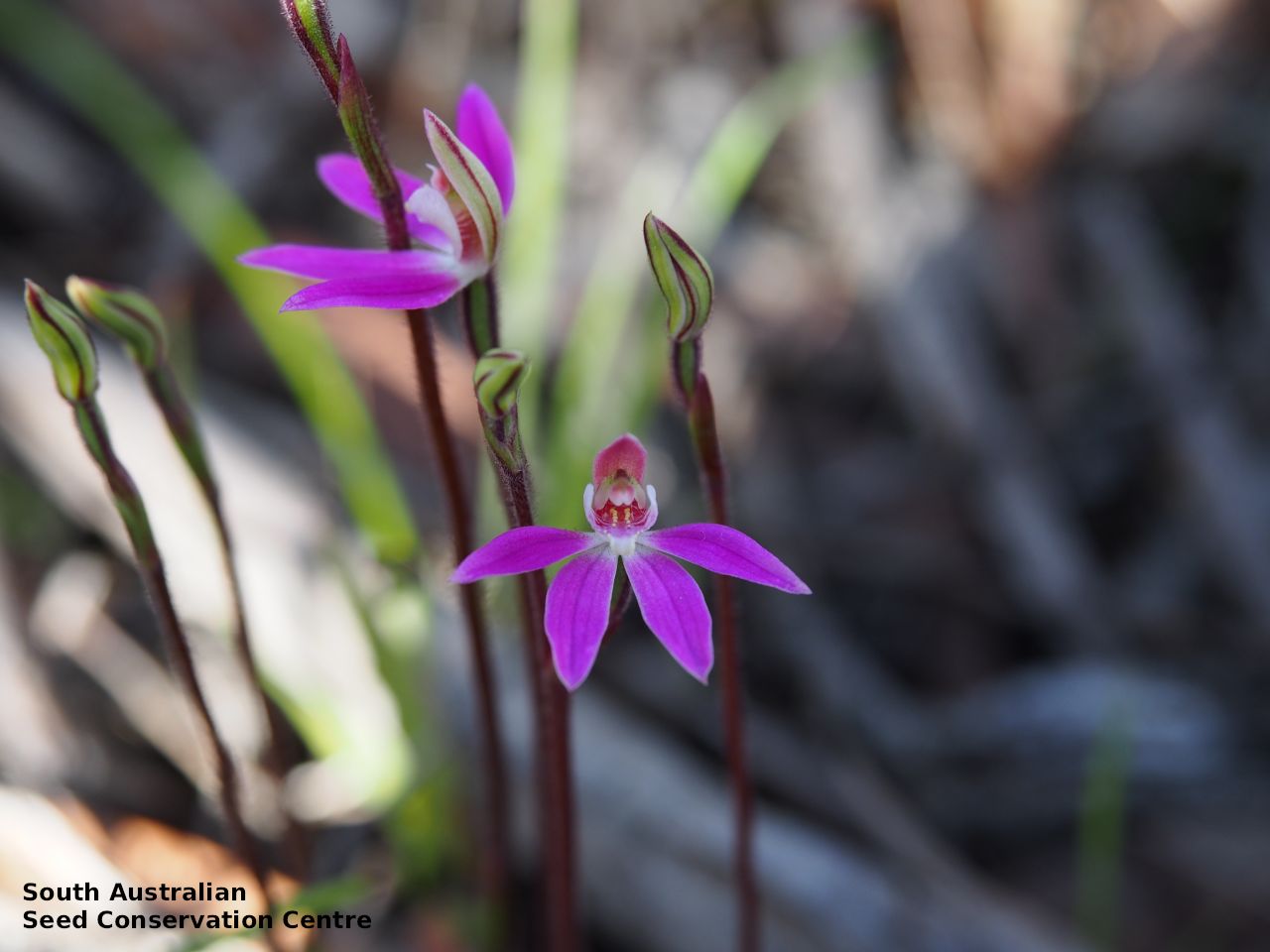
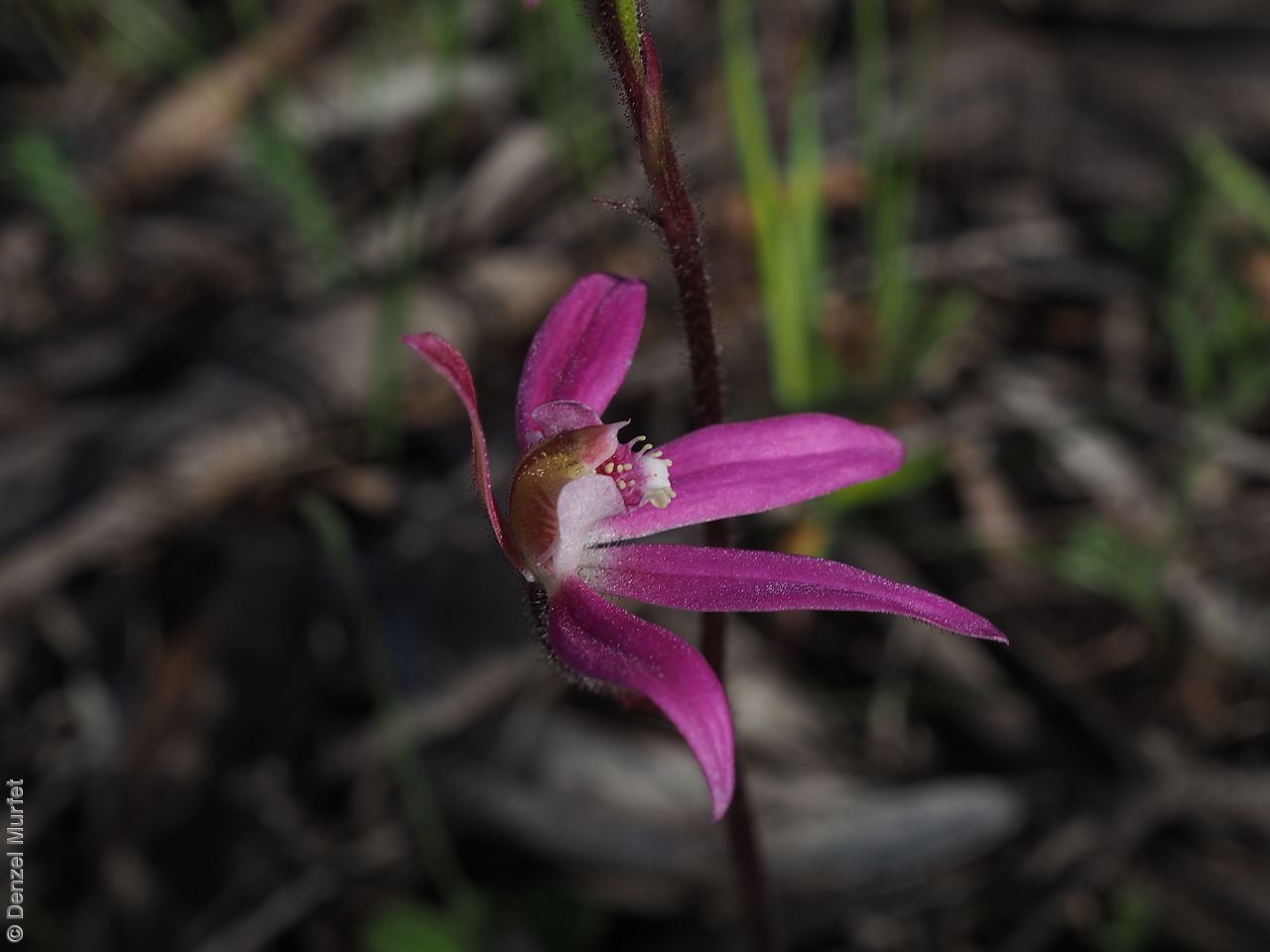
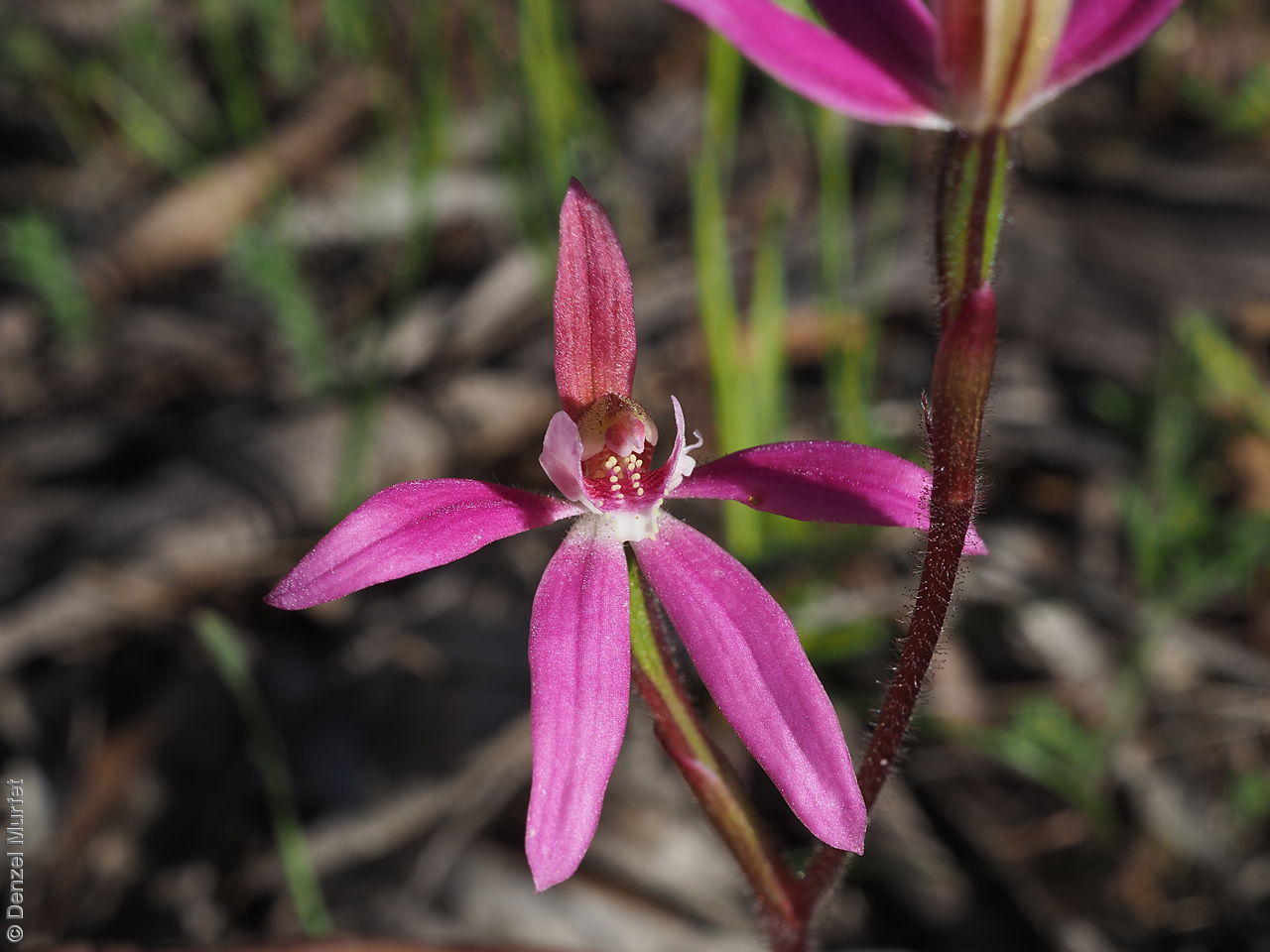
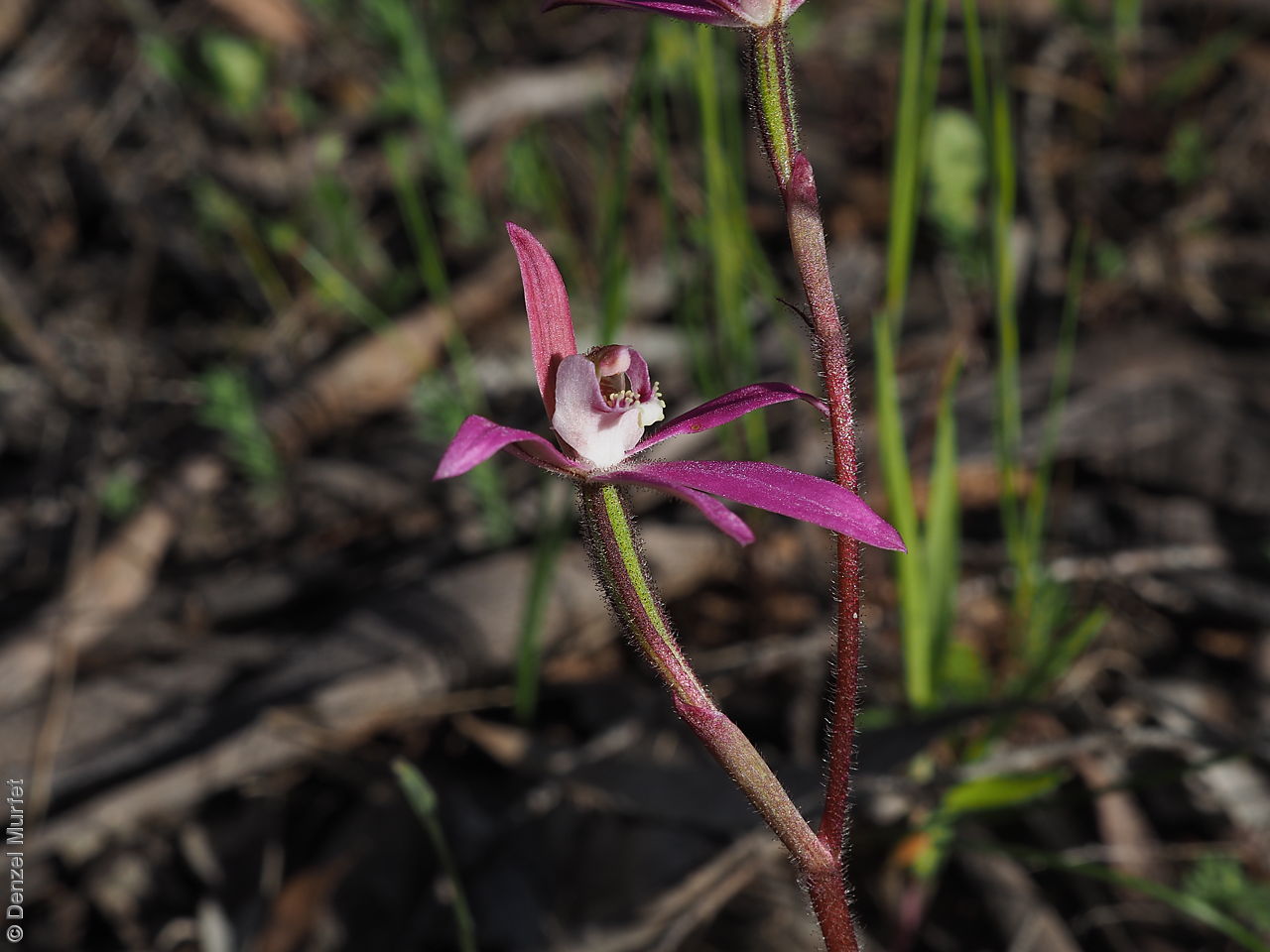
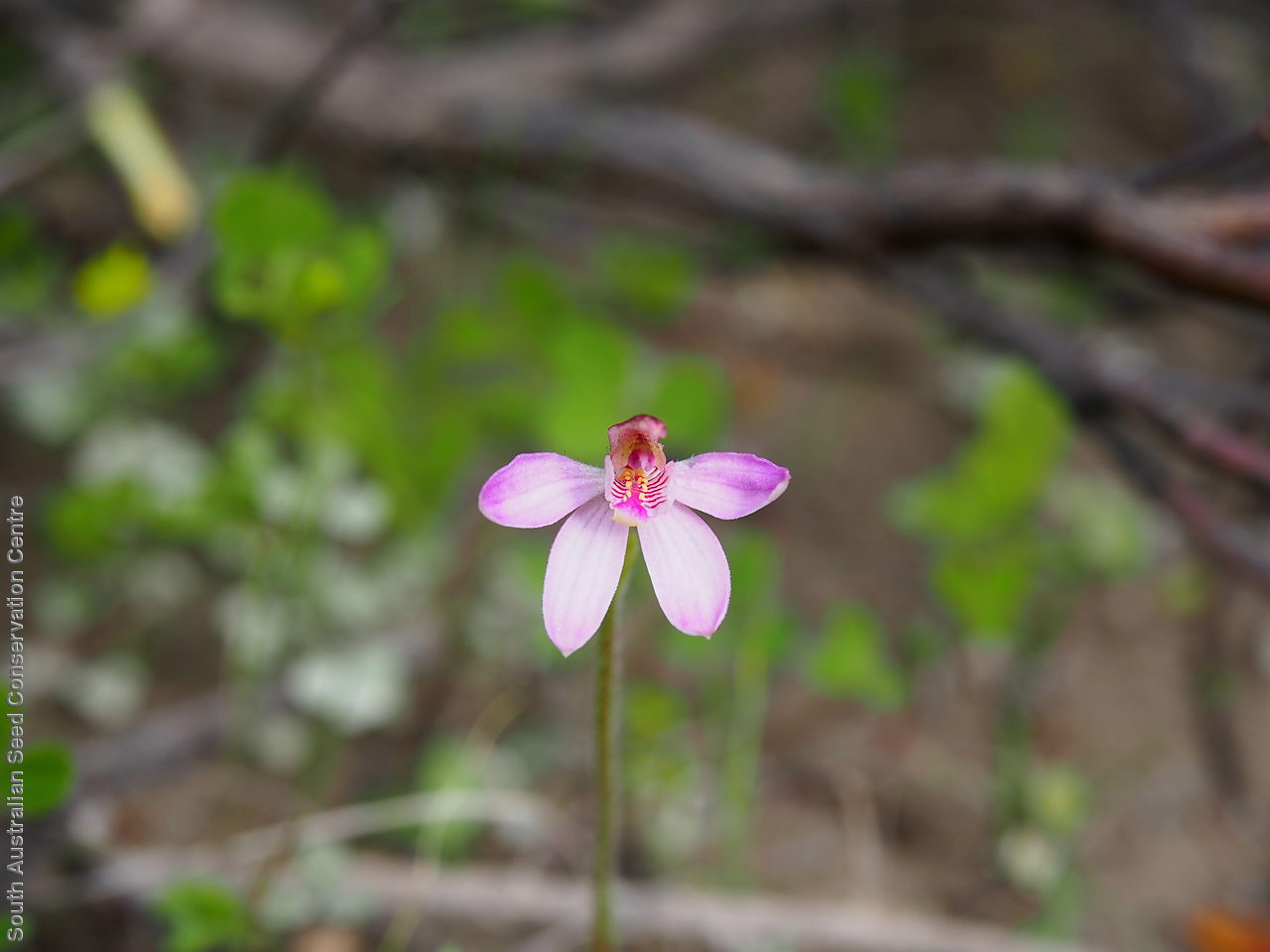
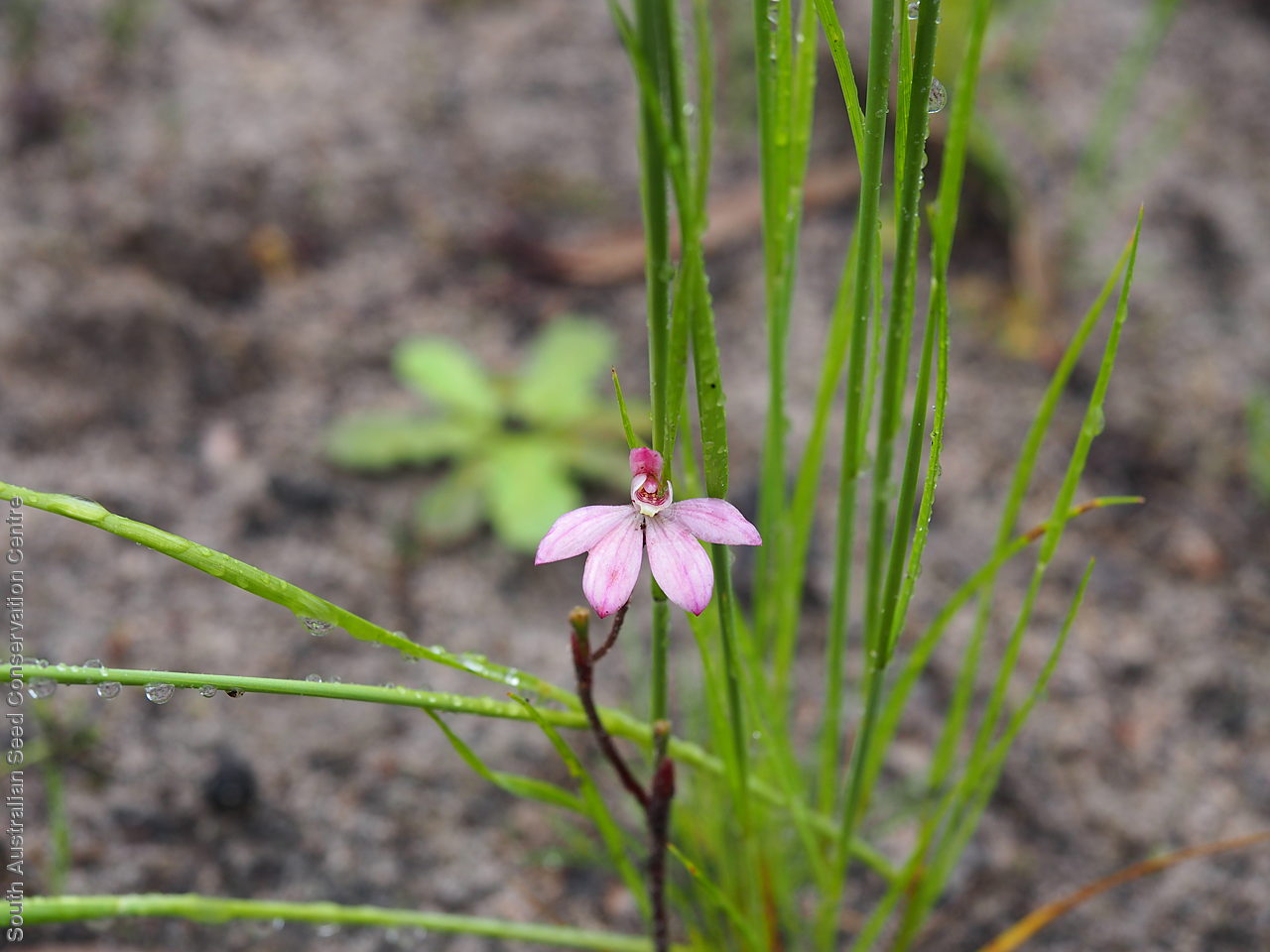
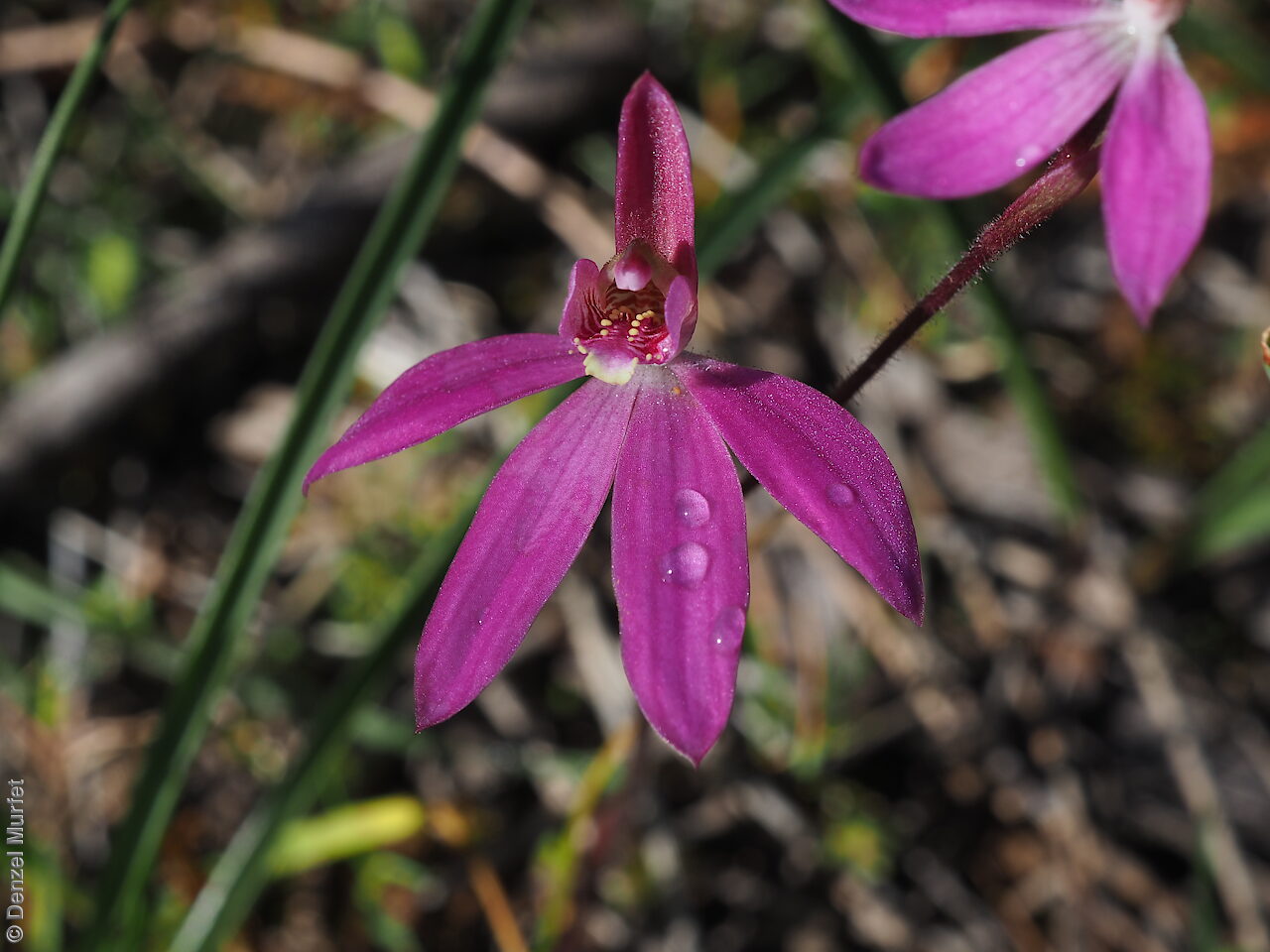

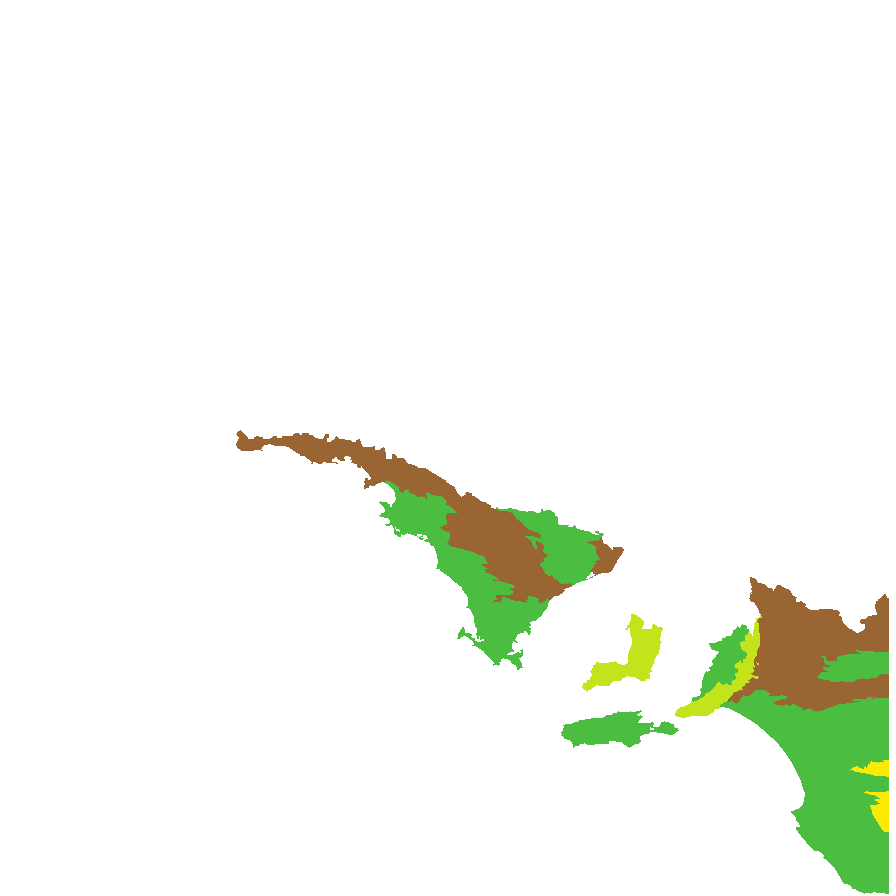
Botanical art
Prior names
Petalochilus carneus
Caladenia catenata f. carnea
Caladenia catenata
Common names
Pink Fingers Caladenia
Pink Fingers
Etymology
Caladenia from the Greek 'callos' meaning beauty and 'aden' meaning a gland, referring to the colourful labellum and the glistening glands at the base of the column that are present in many of the species. Carnea from Latin meaning flesh-colour, referring to the colour of the flower, fleshy-pink.
Distribution and status
Found in the southern part of South Australia, from Eyre Peninsula to the lower South-east, in a wide variety of habitats from forest to heathland on littoral, limestone, sand, loams or clay. Also found in Queensland, New South Wales, Victoria and Tasmania. Native. Common in South Australia. Common in Victoria.
Herbarium regions: Flinders Ranges, Eyre Peninsula, Northern Lofty, Murray, Yorke Peninsula, Southern Lofty, Kangaroo Island, South Eastern, Green Adelaide
NRM regions: Adelaide and Mount Lofty Ranges, Eyre Peninsula, Kangaroo Island, Northern and Yorke, South Australian Arid Lands, South Australian Murray-Darling Basin, South East
AVH map: SA distribution map (external link)
Plant description
Slender terrestrial orchid to 60 cm high with narrow-linear leaves to 15 cm long and 4 mm wide, sparsely hairy. Flowers 1–5, usually pink, sometimes white, often sweet to musky scented. Sepals and lateral petals to 1.5 cm long, outer surfaces with many glandular hairs, greenish pink, sometimes striped; the inner surfaces whitish pink or greenish white; dorsal sepal erect or (rarely) hooding the column. Labellum obovate, to 10 mm long, 3-lobed, white to pink, with distinct, transverse, red bars towards the base and a yellowish tip; lateral lobes entire; midlobe broad-triangular, margins usually with short teeth or rarely entire. Central calli in 2 rows with smooth stalks, clubbed heads, yellow, and distributed up to the base of the midlobe. Column to 8 mm long, incurved, interior with red transverse bars, apical wings narrow-acute. Flowering between August and December. Fruits are brown, papery ellipsoid capsule. Seeds are very small brown ellipsoid seed with a long cylindrical translucent brown mesh-like covering.
Seed collection and propagation
Collect seeds between November and January. Collect fat capsules as they start to dry and turn brown. Pods will split and release the seeds quickly and will require monitoring. To increase the chances of collecting mature pods, it is recommended that a small breathable bag (ie. Organza bags) be used to enclose the developing capsules. Place the capsules in a container that will hold fine seeds and leave to dry for a few weeks or until the capsule split. Then carefully hold the capsule and tap it gently to release the seeds. Store the seeds with a desiccant such as dried silica beads or dry rice, in an air tight container in a cool and dry place, refrigerator or in liquid nitrogen.